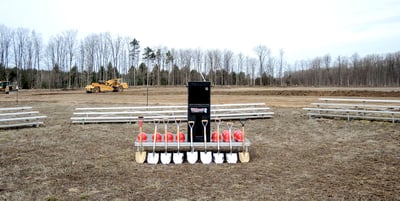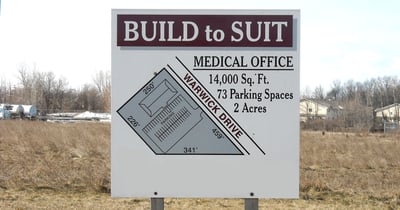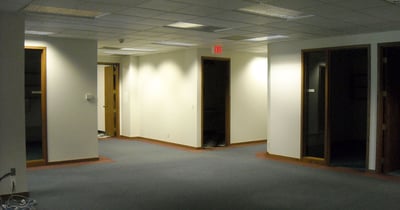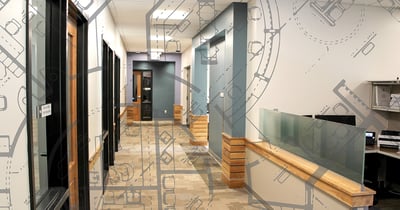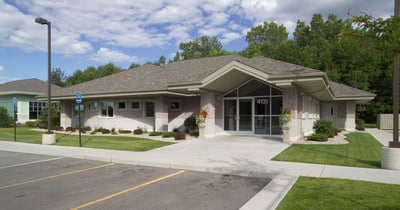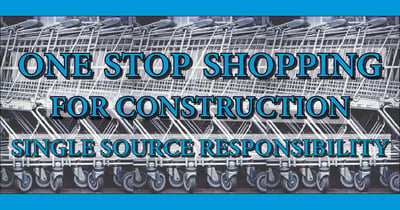We hear about energy efficiency, greenhouse gases, renewable energy, and carbon emissions more frequently these days, but maybe not as popular is Net Zero Energy Building or Net Zero Energy Building Ready. These aren’t new concepts, but with the flurry of attention on energy savings, we wanted to check into the current status for Michigan Commercial Building Owners. Since the Michigan Energy Code (2015) was adopted in 2017 in Michigan, how far are our Commercial Building owners from achieving Net Zero Energy Building Ready?
Posts about Good for Business (4)
Protecting Your Investment from Vehicle-into-Building Crashes
Without proper obstruction, motorists accidentally drive their cars into buildings 60 times a day in the U.S., causing damage and loss to businesses and homeowners.
5 Tips to Hosting Your Best Ground Breaking Ceremony
What Is a Groundbreaking Ceremony?
Groundbreaking ceremonies are an excellent way to start off your building project. With the need for content creation the way that it is these days, a ceremony is a sure-fire way to bring excitement and attention to your future building and business.
Leaseback: Get a New Building While Keeping Business Capital
Build to Suit
Safety On Site - What It Can Mean For Your Construction Project
Safety is an important aspect of any business but especially in construction, where a little accident can have serious impacts to those involved; the trades people on site, the owner, and the contractor. First and foremost, it is our concern to keep all of our workers healthy, so they can go home to their family each night and be a consistent provider both physically and financially, as well as a reliable contributor to our team. That’s why it’s important to have a General Contractor who is not only following the codes and regulations, but has incorporated a culture of safety into their operations.
Staying Open During Construction
Busy Business Owners Can Build, Too
It’s a classic case: a thriving company is busting at the seams and needs to remodel or add to their building to make room for future business, but the thought of construction stopping or slowing production stifles the owner from taking the risk of expanding. So what is a business owner to do? Instead of putting it off until they lose business because they can’t accommodate any more customers, they should find a contractor that will work with them to keep their operations running during construction.
6 Questions Commercial Buyers Should Ask When Shopping a New Building
Once you’ve already determined the approximate size of the space you need, your budget, general location desired, and that the investment will fit within your business objectives, it’s time to start shopping for suitable building for your company changes.
Find Space That Works for Small or Mid-Size Business in 2022
Things have changed for many businesses over the last two years including where staff completes their work, the need for incentives to maintain or attract employees, distancing measures for staff, and how their products are delivered. These changes may have made your current building too big, too small, or no longer functional for your business.
Top 7 Guarantees of Using Design Build Construction Delivery
- Fast track construction
- Less risk for the owner
- Single point of responsibility
- Guaranteed schedule & budget
- Team collaboration
- Quality construction for better value
- More bids collected by one entity to narrow down the lowest price
As business owners become more aware of the benefits of Design-Build Construction, the delivery method continues to chisel a bigger piece of market share throughout the U.S. and is expected to reach 47% usage rate by 2025, according to FMI1, a 5% increase from just 2 years ago. In their DBIA Design-Build Utilization Update - September 2021, they evaluated the United States Census Bureau, stakeholder surveys, industry reports, associations, and government agency databases, and determined the usage of delivery methods within the construction industry and found that the East North Central Midwest region will experience a 6.0% growth in Progressive Design-Build projects by 2025. Also, highway/street, educational, and manufacturing will have the highest compound annual growth rate (CAGR) adopting Design-Build project delivery.
Top Benefits of Single Source Responsibility Construction
Less Risk for the Owner + the Right People Collaborating + Competitive Bids + Adequate Time
Business leaders have to make so many diverse decisions every day. Some decisions are within their area of expertise, others are an educated guess, while even more require an outside source to help direct them.



